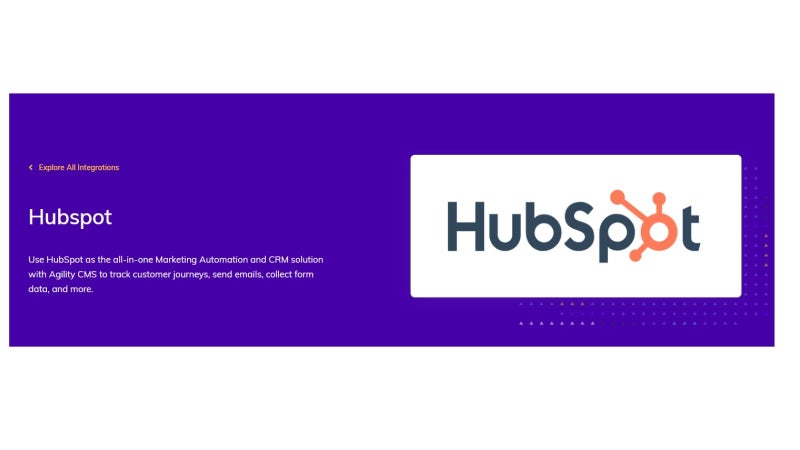Marketing automation software and content management systems are each powerful tools on their own, but when you are able to strategically combine their strengths you can achieve even greater results with your marketing. In the contemporary business climate it’s not enough to simply excel at email marketing or create content that goes viral. By harnessing the distinct capabilities of each system and combining them into a cohesive strategy you can increase the efficiency of each, gain new insights into your customers, and personalize the experience for them more effectively.
1. Enhance the efficiency of each tool through supplementation
Marketing automation excels at nudging your leads and prospects along and providing them with the best information that will drive them to your website. However, once they reach your website, the benefits of marketing automation end, and it’s up to your content strategy to do the heavy lifting.
Conversely, content management systems make it easy for you to develop and employ value-added content once your lead has clicked through. But, it can’t do anything on its own to encourage them to do so. Each system has its unique attributes and shortcomings, and it’s only by effectively combining the two of them that you can achieve optimal efficiency for your overall marketing strategy.
When the powers of marketing automation and CMS are combined, you can efficiently move your leads through each stage of the buying funnel at the appropriate time, finding unique ways to imbue the relationship with value along the way. You’ll always have the correct tool available depending upon what your customer needs are at a specific moment in their journey.
2. Improve your lead nurturing by engaging with precise timing
When it comes to lead nurturing, timing is everything. In many cases, delivering the exact same messaging to the same lead even minutes apart can be the difference between moving them closer to a sale, and the customer choosing to end the relationship. There really is very little margin for error, which is why you have to use every tool available to you in order to ensure that your timing is accurate.
Many companies utilize digital forms to capture data on their leads and essentially kick off the lead nurturing process. When a lead fills out a form it not only indicates that they have reached a specific stage of the buying journey, but it is also a form of assent that says they are ready to receive your marketing materials and internalize your messaging.
When your forms are integrated between your CMS and your email marketing you have an opportunity to respond and adapt even more quickly. The new data that is collected can quickly be updated across all platforms for consistency. Every employee who goes to access a lead profile, whether it’s a person initiating a new email marketing campaign or someone in charge of content creation, will see real-time data reflected throughout. It will also help you determine whether or not your content is performing up to expectations, allowing you to make adjustments on the fly.
The moment a lead fills out your digital form, a ticking time bomb is set off. If your automation platform isn’t prepared to respond to them with the right information at the right moment, you could be losing out on potential business. Through the integration of these two platforms, however, you’ll be ready to respond with insights gleaned from powerful data at a moment’s notice.
3. Personalize your messaging with powerful data from your CMS
The quest for more effective personalization is never-ending for email marketers. You know that it’s absolutely vital to include personalized content in your messaging, but you’re also cognizant of the fact that customers are becoming more skeptical of content that they perceive as being automated.
The looming question is, how do you continue to automate your processes while still engaging savvy consumers on a personal level? And the answer is: with the help of reliable data from your CMS.
One reason to use a CMS is to collect high-quality data about the kinds of content that are effective and use it to continually refine your content generation program. This is a vital process for any company that hopes to succeed in the 21st century, because customers expect to see customized content that speaks to the realities of their specific buying journey.
But that doesn’t mean that you should simply use this data to make more engaging content for your website and leave it at that. By incorporating this information into your email marketing, you can optimize your content to reach your leads at the right place and right time.
For example, if your CMS tells you that a certain prospect has viewed posts about two different models of a product, you could create a comparison piece between the two and email them a synopsis. Or, if you know that they have been interacting with your chatbot and asking questions about product features, you can email them a link to a personalized landing page that has additional info that could help answer their questions.
4. Use your automation to build consistent value into the customer journey
On the flip side, the data you collect from your marketing automation initiative can also help you build a more effective content strategy. If it seems like you can never escape the need for high-quality data to be shared among systems it’s because you can’t. Robust data, and the analysis and management of said data, are the fuel that feeds the lead generation and leads nurturing efforts.
Your marketing automation data tells you what kinds of things your leads are interested in clicking on. It shows you what kinds of personalized messages reach them most effectively. And it denotes their exact position in the sales funnel at a point in time.
Once you know these details, you should be able to create a curated experience for them on your website through your content strategy. You can then use your CMS to deliver targeted content that provides them with real-world value, which is the most important factor in the customer’s decision at each stage of the journey.
They are going to ask themselves at every touchpoint if your organization is providing them the value they are searching for, even if they only ask it subconsciously. The ability to deliver specific value is exactly why an effective content strategy is so important, and harmony between email marketing data and your CMS management will only serve to enhance the relationship between the two platforms.
5. Put your CMS to use as a marketing automation content repository
If you’ve put in the time and effort to create unique and valuable content to share with your leads through email marketing, then it would be silly to abandon it after a single use. You never know what kinds of value your old content can have in the future; even if it needs to be repurposed or customized for a new subset of buyers, it will still make the process more efficient.
The issue is that marketing automation systems aren’t designed to be content warehouses, and relying on a method such as email client search can be time-consuming and unreliable. Thankfully, you have a CMS in place that can act as a content repository for everything you create.
Most CMS systems have powerful tools for organizing content, and they make it easy to search and filter in order to narrow down your results quickly. When you need access to quality content that you know provides value to your audience, then you’ll know exactly where to find it.
6. Collect and analyze micro-and macro-data to refine your strategy
When it comes to digital marketing tools, certain platforms are more capable of collecting and analyzing either micro-data or macro-data. A good tool should do both, of course, but that doesn’t mean there aren’t strengths and weaknesses at play.
For instance, marketing automation software can tell you exactly how a specific recipient interacted with an email. However, it’s often hard to make broad judgements about the recipients who didn’t open or click through, because there could be any number of root causes for that behavior. Similarly, your CMS can show you the various types of content that are the most popular amongst your users. However, it’s difficult to tell what about a piece of content specifically resonates with one person unless they volunteer that information.
It’s in the marriage of the two systems that the power of data truly shines. When you have access to both micro-data on audience preferences and behaviors, as well as macro-data on content and website performance, then you can create an adaptive marketing strategy that is backed by a commitment to customer value.




